Have you ever wondered why some knives are stamped and others are forged?
With so many styles of knives on the market, it can be difficult to decide which type is the best for your needs.
In this article, you’ll learn what makes a knife forged or stamped and which one is right for you.

What are Forged Knives?
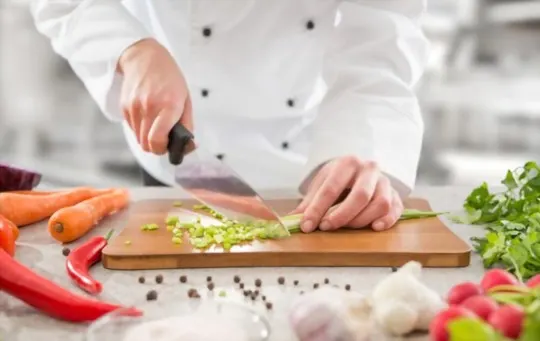
Forged knives are considered to be higher quality than stamped knives.
They are created by a process of heating, shaping, and cooling the metal blade.
The process is known as forging because the metal is hammered or pressed into its desired shape.
Forged knives tend to have a heftier weight as compared to stamped knives, which can make them more comfortable to use for cutting tasks that require some pressure.
When held in the hand, they often feel well-balanced due to their single piece construction.
The forging process creates tiny air pockets within the steel which helps with food release during cutting.
This makes forged knives especially ideal for slicing meats or fruits with skins.
When properly maintained, forged knives can last for years.
What are Stamped Knives?
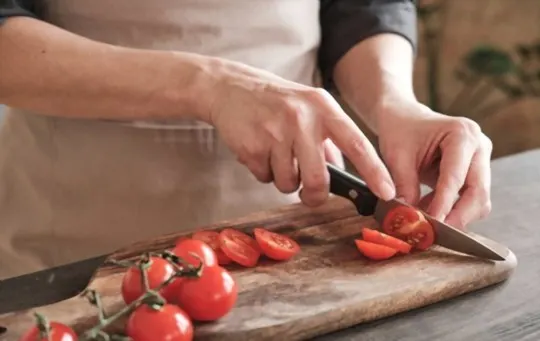
Stamped knives are a type of kitchen knife that is manufactured by a completely different process than forged knives.
Unlike forged knives, stamped knives are made using machines and a metal stamping process.
In this process, the blade of the knife is cut out from a large sheet of steel using a hydraulic press or another type of machine.
Stamped knives are often perceived as lower-quality compared to forged knives.
However, they do offer some benefits over their counterpart.
The machine manufacturing process allows for mass production of stamped knives which lowers the cost significantly – this makes them an attractive option for those on budget constraints.
On the downside, stamped knives lack the durability and strength of forged knives because they use thinner steel sheets which can easily bend or warp if not gripped properly.
Furthermore, since they require frequent sharpening, it’s best practice not to use harsh dishwasher detergents while cleaning these flimsy kitchen essentials.
Differences Between Forged and Stamped Knives
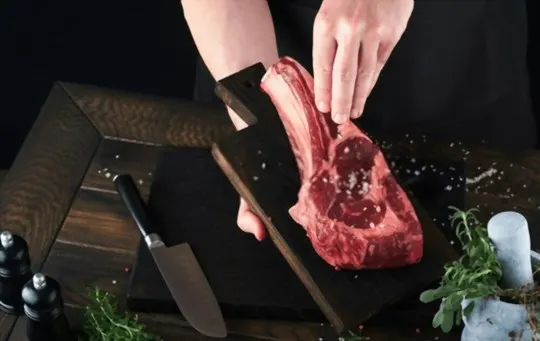
Forged and stamped knives are two different types of kitchen knives that have distinct differences.
While forged knives are crafted using a traditional method that involves heating and shaping metal, stamped knives are created using a stamping machine that cuts them out of large sheets of steel.
When it comes to their construction and durability, forged knives tend to be more reliable and long-lasting than stamped knives.
Since they are made from high-quality steel, these knives have thicker blades with a reinforced spine, making them robust enough to tackle even the toughest food items.
On the other hand, stamped knives tend to be thinner with a lighter weight, which makes them easier to use but less durable over time.
Another difference between these two types of knives is their sharpness.
Forged knives tend to hold their edge for longer periods due to their sturdy blade construction.
This means that you may not need to sharpen them as often as you would with stamped knives.
In contrast, while stamped knives need frequent sharpening as they become dull quickly because of their thin blades.
Construction and Durability
When it comes to knives, construction and durability are crucial factors.
The two most common types of knife construction are forging and stamping.
Let’s take a closer look at the differences between the two.
Forged knives are typically more durable than stamped knives because of their high-quality steel and the forging process.
This process involves heating a single piece of steel until it becomes malleable enough to be easily hammered into shape, creating a solid piece with no weak spots or imperfections.
On the other hand, stamped knives are made by cutting out blades from large sheets of steel before being heat-treated and sharpened with machine precision.
While this is an efficient method of mass-producing affordable knives, it results in less durable blades with weaker points along their edges.
In summary, if you’re looking for a knife that will last for years to come, investing in a well-made forged knife is likely your best bet.
Sharpness and Edge Retention
When it comes to the sharpness and edge retention of knives, the construction method can play a significant role.
Generally, forged knives tend to maintain their sharpness for a longer time than stamped knives.
This is because of the manufacturing process that they undergo, which involves heating the metal to high temperatures and then compressing it under extreme pressure.
This process creates a denser metal that is more resistant to wear and tear.
While both types of knives can be sharp, forged knives tend to have better edge retention than their stamped counterparts.
However, this doesn’t mean that all forged knives are superior in this regard since other factors such as the specific type of steel used also play a role.
In addition to the manufacturing method and type of steel used, individual care also plays a critical role in maintaining a knife’s sharpness and edge retention over time.
Regardless of whether your knife is forged or stamped, proper storage and regular sharpening are necessary steps towards ensuring optimal performance.
Overall, when it comes to sharpness and edge retention, forged knives tend to be higher performing than stamped knives due to their manufacturing process.
However, other factors such as steel type and individual care should also be considered.
Weight and Balance
Weight and balance are two important factors to consider when choosing a knife.
Let’s take a closer look at how forged and stamped knives differ in terms of weight and balance.
Forged knives tend to be heavier than stamped knives due to their thicker, denser construction.
This added weight can make them feel more substantial in your hand, which some people prefer.
However, it can also make them more tiring to use for longer periods of time.
When it comes to balance, forged knives generally perform better than stamped knives.
This is because they are typically designed with a full tang that extends into the handle, providing better weight distribution throughout the knife.
As a result, you may feel like you have more control over the blade when using a forged knife.
On the other hand, stamped knives often have a partial tang or no tang at all, which can affect their balance.
They may feel lighter in your hand as a result, but this could also translate to less precision and control when slicing or chopping.
In summary, if you’re looking for a heavier knife with better balance, a forged knife may be the way to go.
But if weight isn’t an issue and you prioritize agility over heftiness, then you might prefer a stamped knife instead.
Price
For as long as knives have been used for cooking, there has been a debate of whether to purchase a forged or a stamped knife.
Both types have their advantages and disadvantages, and the price point is certainly one of the most talked-about differences.
When it comes down to it, stamped knives are usually more affordable than their forged counterparts.
This is due to the fact that they require much less handwork in their production process.
Stamped blades are cut out from a larger sheet of metal using a machine, whereas forged knives are pounded into shape by hand on an anvil.
To give you an idea of just how much more affordable stamped knives can be, let’s take a quick look at some numbers.
In general, high-quality stamped knives can be found for around $30-50 dollars each, while top-of-the-line forged options will set you back several hundred dollars apiece.
Of course, price isn’t everything when it comes to purchasing kitchen appliances.
If you’re someone who enjoys investing in quality tools and equipment that will last for years and years, then splurging on a set of forged knives could be well worth it in the long run.
That said, not everyone has hundreds (or even thousands) of dollars to drop on high-end kitchen gear.
For those on a budget who still want to get great performance out of their knives without breaking the bank, stamp options will likely be the better choice.
So ultimately, choosing between forged and stamped blades comes down to weighing your priorities: Are you willing to pay extra for expertly crafted tools that will last for generations? Or do you value affordability above all else? Keep reading as we delve deeper into other factors that can help make your decision easier.
Which One Should You Choose?
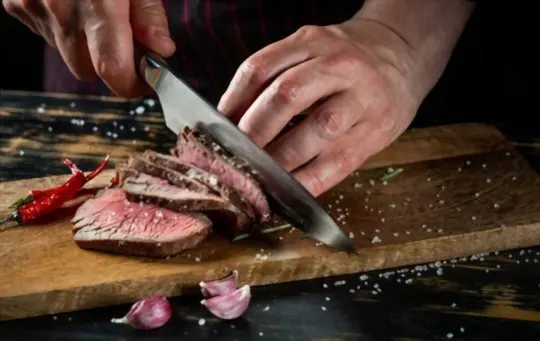
When it comes to choosing between forged and stamped knives, the decision ultimately depends on your personal preferences and needs.
To help you make the right choice, let’s take a deeper look into the differences between the two.
When deciding which one is best for you, consider factors like how often you use your knives, what kind of tasks you perform with them, and what your budget is.
If you’re someone who uses their knives frequently for heavy-duty tasks, opting for a forged knife may be worth the investment due to its durability.
On the other hand, if you are not going to be using your knives as much, or cannot afford an expensive range then stamped knives can still perform adequately while being relatively cost-effective.
It’s important to note that while forged knives tend to be more expensive than stamped knives, this isn’t always the case.
Some high-end stamped knife brands can be just as costly due to factors like material quality and craftsmanship.
In summary, both options have their merits; stamped knives are great for everyday use without extensive cares while investing in a set of forged blades should only happen if someone frequently cuts or chops food.
Ultimately, it’s up to you when it comes down to picking one up from these two methods.
Professional Chefs’ Opinion
Professional chefs are the experts when it comes to choosing the best culinary tools.
Their preference for knives is, of course, dependent on their specific needs and the nature of their work.
However, most professional chefs tend to opt for forged knives over stamped ones.
As we can see from this table, most professional chefs prefer forged knives due to their superior quality, durability, and overall performance.
They believe that these knives offer better balance, weight distribution and grip compared to their stamped counterparts.
This makes them ideal for heavy-duty tasks such as cutting through bones or tougher cuts of meat.
Moreover, forged knives are manufactured using a more intensive process than stamped ones.
They are made by heating and hammering a single piece of steel until it takes shape – resulting in a stronger blade that can maintain its sharpness for longer periods.
On the other hand, although some professional chefs do use stamped knives because they are less expensive and versatile.
Stamped knives are produced by stamping out blades from large sheets of metal before being sharpened – this creates weaker blades that need sharpening more often.
In summary, Professional cooks prefer forged knives due to their quality performance-ability in tough cooking conditions but some may choose stamped knives depending on the job’ requirements.
Home Cooks’ Opinion
As a home cook, you may not have considered the difference between forged and stamped knives.
But when it comes to choosing the right tool for your kitchen, it’s worth considering which type of knife is best suited to your needs.
Of course, these are just generalizations – there are high-quality stamped knives out there that can rival their forged counterparts in terms of performance and longevity.
So what do home cooks actually think about the differences between forged and stamped knives? Some may prioritize cost over quality and opt for stamping, while others may place more value on durability and invest in a set of forged knives.
It ultimately comes down to personal preference and budget.
However, as with any kitchen tool or appliance, it’s important to do your research before making a purchase so that you can make an informed decision.
Consider reading reviews from other home cooks or consulting with knowledgeable salespeople at your local kitchen store.
Conclusion
A comparison of forged and stamped knives has been brought to light in this article.
As a home cook, it is natural to seek an affordable and durable option when it comes to choosing a knife.
After all, a good investment in kitchen equipment can go a long way in ensuring that your cooking experience is enjoyable.
However, while selecting between forged and stamped knives ultimately depends on personal preferences, it is important always to consider what works best for you in terms of performance expectations since all knives require care and maintenance to extend their lifespan.
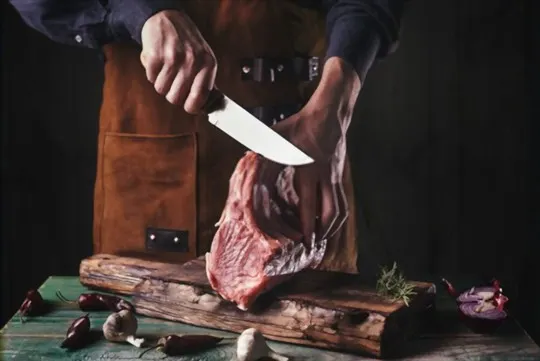
Forged Knives vs Stamped Knives: What’s the Difference?
Ingredients
- Forged Knives
- Stamped Knives
Instructions
- Choose between forged knives and stamped knives based on your preference and needs.
- Follow the recommended handling and care instructions specific to your chosen type of knife.
- Utilize the knives for cutting, slicing, or chopping ingredients as required in your recipe.
- Appreciate the craftsmanship and durability of forged knives or the versatility and affordability of stamped knives.
- Clean and store your knives properly to maintain their sharpness and longevity.
- Enjoy the precise and efficient cutting capabilities of your chosen knives.
- Explore various cooking techniques and recipes to fully experience the advantages of either forged knives or stamped knives.

Andrew Gray is a seasoned food writer and blogger with a wealth of experience in the restaurant and catering industries. With a passion for all things delicious, Andrew has honed his culinary expertise through his work as a personal chef and caterer.
His love for food led him to venture into food writing, where he has contributed to various online publications, sharing his knowledge and insights on the culinary world. As the proud owner of AmericasRestaurant.com, Andrew covers a wide range of topics, including recipes, restaurant reviews, product recommendations, and culinary tips.
Through his website, he aims to inspire and educate fellow food enthusiasts, offering a comprehensive resource for all things food-related.

Leave a comment